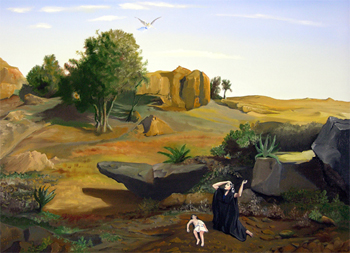The Cumulative Fulfillment of Prophecy

This is a copy I painted of a masterpiece by Corot. An artist begins a work like this by first painting the background on his canvas. Background features are painted with softer lines and often employ bluish colors to make them look distant. The middle ground items follow next, painted with a little sharper focus and perhaps more vibrant colors. Finally the subject of the picture is painted in the foreground in sharp focus and perhaps using high contrast colors. The canvas was [ful]filled by the background, but the picture was not complete. The background and middle ground of the painting provide important context and perspective for the true subject, but the canvas is not ultimately [ful]filled, i.e., finished, until the final touches of the foreground subject are added.
In like manner, biblical prophecies are often fulfilled cumulatively. Instead of only one complete fulfillment per prophecy, prophecies can be fulfilled by a progression of events that occur over a long time. Thus, the prophecy of the virgin birth in Isaiah 7.14 receives its first fulfillment in Isaiah 8.3, but this is only a “background” fulfillment. The ultimate fulfillment does not occur until the virgin birth of Jesus recorded in Matthew 1.20-25. A prophecy can have several background and middle ground fulfillments, but the prophetic “canvas” is not finished (ultimately fulfilled) until the final event to which all others pointed occurs. We diagram the cumulative fulfillment of prophecy this way:

P represents the original prophecy, f1 and f 2 represent background fulfillments and f T stands for the Telos (ultimate) fulfillment.


0 Comments:
Post a Comment
<< Home